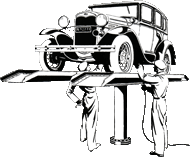
Model A
Ford Garage
Zenith 3 Carburetor Castings

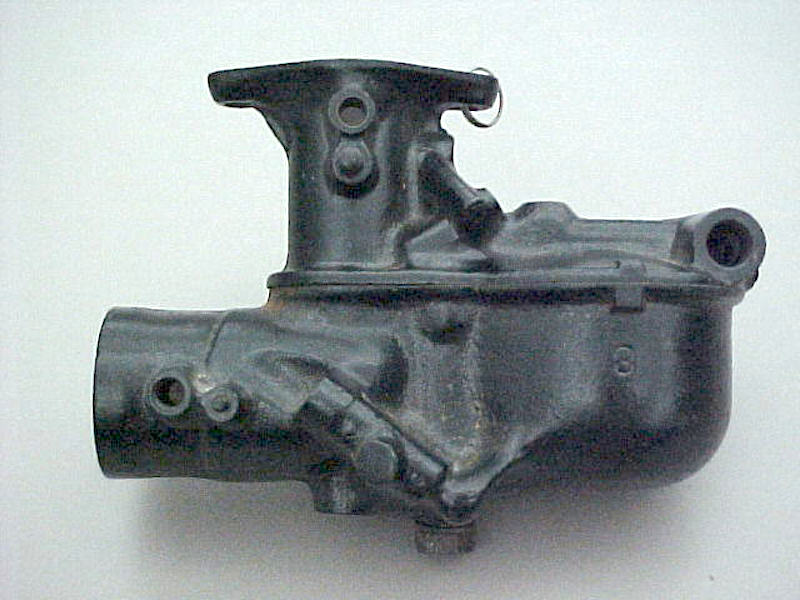 fordgarage.com
fordgarage.comIn 1931 Ford Motor Company began producing the Zenith design carburetor in small volumes. The Ford-produced version was marked as a "3", or as a "Zenith-3".
The Zenith 3 is identified by its much thinner upper and lower castings, as well as by the thinner but gusseted manifold attachment flange. It was produced in both normal and sidebowl (sediment bulb) upper casting configurations.
The example above and below is a very unusual non-sidebowl (sediment bulb) version marked only with the number "3", and without the name "Zenith".

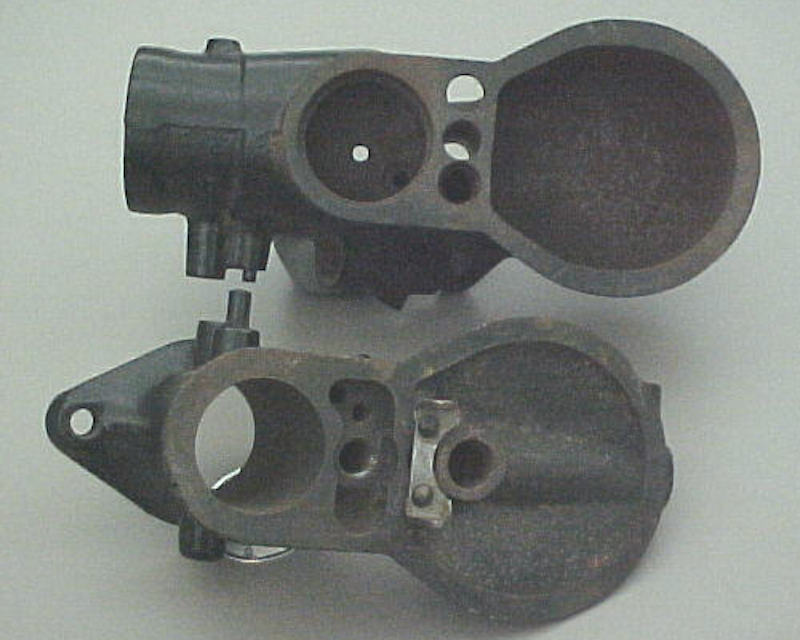 fordgarage.com
fordgarage.comAlso seen in the pic above is the steel float bracket. The Zenith 3 carburetor had a steel float bracket rather than the typical brass bracket as used on 1928-30 Zenith and Holley carburetors.

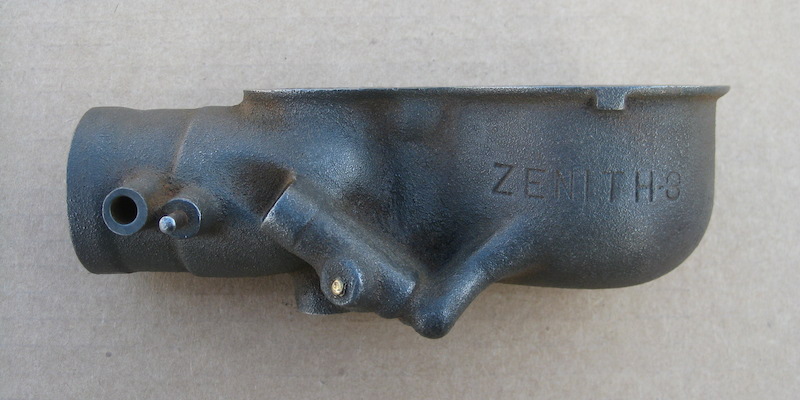 fordgarage.com
fordgarage.comPictured above is the most typical Zenith 3 bottom casting marked "Zenith-3". These Ford-produced castings are very thin and fragile compared to the Holley and Zenith versions, and they will often shatter if dropped.

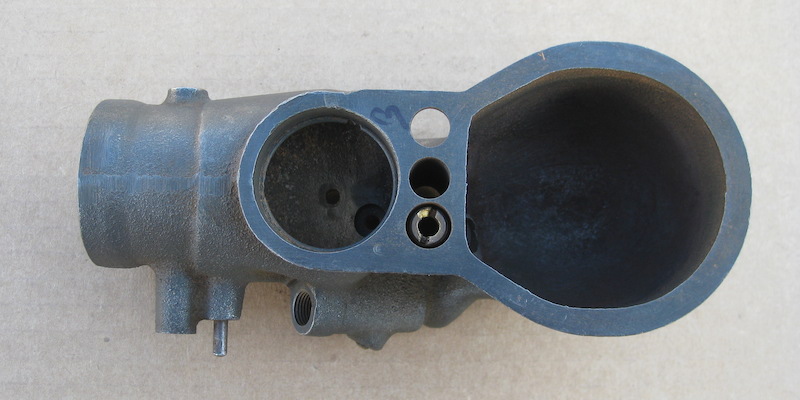 fordgarage.com
fordgarage.comThe Zenith 3 lower casting had an integral machined cast iron seat for the gas adjusting valve needle, and did not use the threaded brass seat found on most earlier Model A carburetors. Additionally, the Zenith 3 had the largest diameter bowl vent opening.

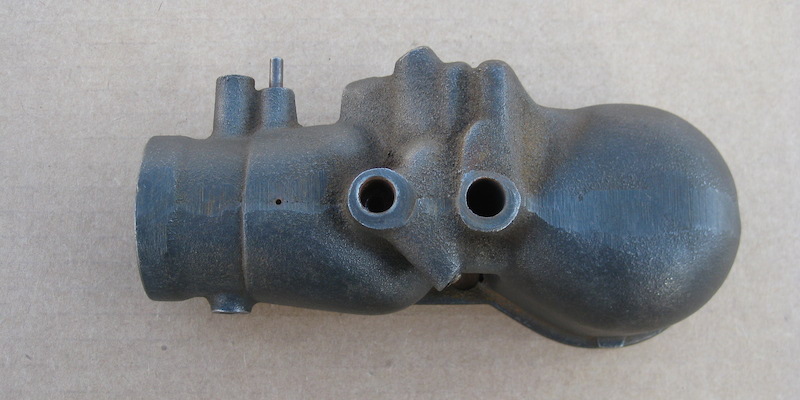 fordgarage.com
fordgarage.com
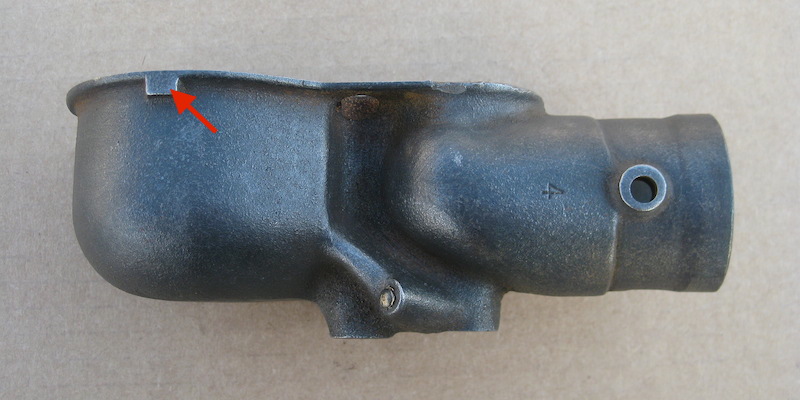 fordgarage.com
fordgarage.comBoth sides of both the upper and lower Zenith 3 castings are distinguished by the very small workholding bosses on the sides of the bowl. Those machining clamp points are considerably smaller than those found on carburetors produced by either Zenith or Holley.

 fordgarage.com
fordgarage.comThe scan above is from the Ford detail drawing for the carburetor lower casting. The notes clearly show the meaning of the Zenith 1, 2, and 3 designations found on the Model A Ford carburetors. The purpose of the numbers was to identify the manufacturer of the carburetor.
The design was owned by Zenith, but Henry Ford had a close personal friendship with George Holley. Many Model A carburetors were produced by Ford's long standing supplier Holley, under license from Zenith. Also note that the Holley name is misspelled on the Ford drawing!
More related information on Ford Garage:
- For more Model A & B related information, use the Site Search box at the top or bottom of this page.
- Model A Zenith Carburetor Numbering
- Model A Zenith Carburetor Theory of Operation
- Model A & B Carburetor Jet Sizes & Flow Rates
- Model A Zenith Carburetor A-9545 Secondary Well Variations
- Model A Carburetor Float Mass
- Model A Zenith Carburetor GAV Wrench
Vince Falter
January 2008

